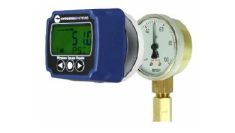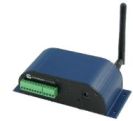Audit Energy Use
Industrial Facilities – Solutions
Overview
In many facilities today, reducing energy use is a key priority. The first step is usually to obtain a baseline of existing usage, including “sub-metering” of energy use by various equipment and locations. Once this data is available, strategies can be developed to address the highest use areas, and/or the areas of “low hanging fruit”.
The Challenge
Most facilities do not have instrumentation in place to perform sub-metering. In most cases, it is not only electrical consumption which needs to be monitored, but also flow of steam, chilled water, cooling air, domestic water, compressed air, etc. Typically, temperature, pressure and flow are required for energy analyses.
However, the cost and disruption to install new transducers is often prohibitive. It involves cutting pipe, installing transducers, making drawings, running power and signal wires, connecting to I/O ports, configuring PLC’s, and leak checking. The costs can easily run into thousands of dollars per measurement point, not to mention disruption to ongoing operations.
The Cypress Envirosystems Solution
Often, a facility will already have manual dial gauges which display pressures and temperatures. What if we can simply read these gauges and collect the data? The Wireless Gauge Reader (WGR) is exactly the answer. These non-invasive, wireless optical devices act as “electronic eyeballs” which clamp on to existing gauges. They install in minutes over an existing gauge without the need to break seals, do leak checks or run wires.

Similarly, the Wireless Transducer Reader (WTR) is used together with clamp-on non-invasive ultrasonic flow meters to measure flow of liquids or gas, or paired with clamp-on current sensors to measure electrical current. The WTR can also read legacy electrical or water meters with pulse outputs, and also a variety of temperature sensors. Unlike conventional data acquisition devices, a single WTR can be configured to read 4-20mA, 0-5V, 0-10V, thermocouples, thermistors, RS-232, or RS-485 inputs in minutes.

Once installed, the WGR and the WTR transmit the data to a central receiver/hub for alarming and trending from any Windows PC or Mac using a simple web browser. The data can also be integrated with existing plant automation systems (via OPC or BACnet) and displayed on existing operator control stations.


